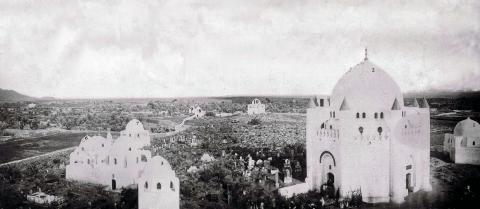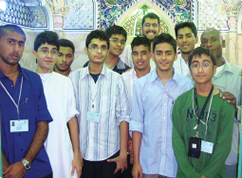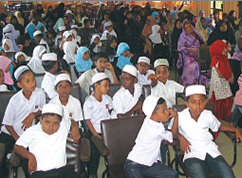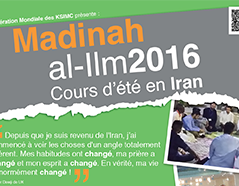The World Federation is pleased to introduce a series of videos to help us acquire closeness to Allah (swt). The first 5 videos will be an Introduction to Shahr Ramadan and for the rest of the Holy month we will focus on Akhlaq. Click here to watch Day 25.
"The ultimate tragedy is not the oppression and cruelty by the bad people but the silence over that by the good people." - Martin Luther King, Jr.

Every year, barely a week after the celebration of Eid, Shias all over the world gather together to remember the tragedy of The Demolition of al-Baqi, a destruction from which this blessed cemetery has never recovered.
On a dark Wednesday towards the end of April, 1925 (8th Shawwal, 1345 AH), Jannat Al-Baqi - a graveyard in Madinah of great historical importance and filled with the graves of thousands of the companions of our Holy Prophet (s) as well as those of his Ahlul Bayt (as) - was demolished on the order of King Ibn Saud.
Al-Baqi was established by the Prophet (s) when he ordered certain trees to be felled from the garden to bury his companion, Uthmanibn Madh’un. In the following years, the Prophet (s) also buried his infant son Ibrahim there. The area became popular for burial, because the Prophet (s) used to greet those who were buried there by saying, “Peace be upon you, O abode of the faithful! God willing, we should soon join you. O' Allah, forgive the fellows of al-Baqi”.
Eventually, his beloved daughter Fatimah al-Zahra (a) was buried there too along with Imam Hasan Ibn Ali (a), Imam Ali Ibn al-Husayn (a), Imam Muhammad al-Baqir (a), and Imam Ja'far al-Sadiq (a).
Over the years, al-Baqi was maintained with splendour and respect, until the first attack on it occurred in 1806, under the rule of Saud bin Abdulaziz. However, the Ottomans gained control over the region a few years later and rebuilt the graveyard in 1818.
Sadly, just over a century later, in 1924, Wahhabis entered Hijaz for a second time and carried out another merciless plunder and massacre. Houses were razed, people were killed in the streets, women and children too were not spared, with eyewitnesses speaking of infants being beheaded while still clinging to the necks of their mothers. Awn bin Hashim (Sharif of Makkah) writes: “Before me, the valley appeared to have been paved with corpses, dried blood staining everywhere all around. There was hardly a tree which didn't have one or two dead bodies near its roots.”
In 1925, Ibn Saud attacked and destroyed Jannat al-Mu'alla in Makkah along with other holy shrines and then moved on to demolish Jannat al-Baqi and level it to the ground.
Despite worldwide protests held the following year and every year since by Muslims to denounce this massacre and destruction, there has been neither apology nor an offer of reconstruction by the powers in place.
This year, as we at The World Federation join the world in mourning the desecration of the holy graves of our Imams (as) and remember the innocent lives lost simply for nurturing the love of the Ahlul Bayt (a), we cannot help but look around us and see history repeating itself not only in Madina, but in Iraq, Syria, Pakistan and all the other areas in which Muslims - and Shias in particular - are being targeted and brutally slaughtered.
Standing up in protest of what happened so many decades ago is a way of reminding ourselves that someone still needs to speak up for the oppressed and the innocent, for if we don't support our own brothers and sisters, then who will?
For more information, check out these links:
https://www.al-islam.org/history-shrines/history-cemetery-jannat-al-baqi
https://www.al-islam.org/new-analysis-wahhabi-doctrines-muhammad-husayn-ibrahimi
http://www.theshiapedia.com/index.php?title=Demolition_of_Jannat_ul-Baqi_(8th_Shawwal)
http://jannatul-baqi.blogspot.co.uk/2013/07/how-wahabis-destroyed-graveyard-of.html
Related News
A Translation of Imam Zayn al-ʿĀbidīn’s (ʿA) Discourse on Hajj with al-Shiblī
Translated and introduced by Mohammed Ali Ismail
Following the success of the last workshop held in January 2014 in Hyderi , The World Federation, in partnership with The Council of European Jamaats, has organised another workshop for single males and females aged 18 and over on the topic of spouse selection.
“It made you re-evaluate your values and yourself, and the role play scenarios made you think” Hyderi, January 2014.









